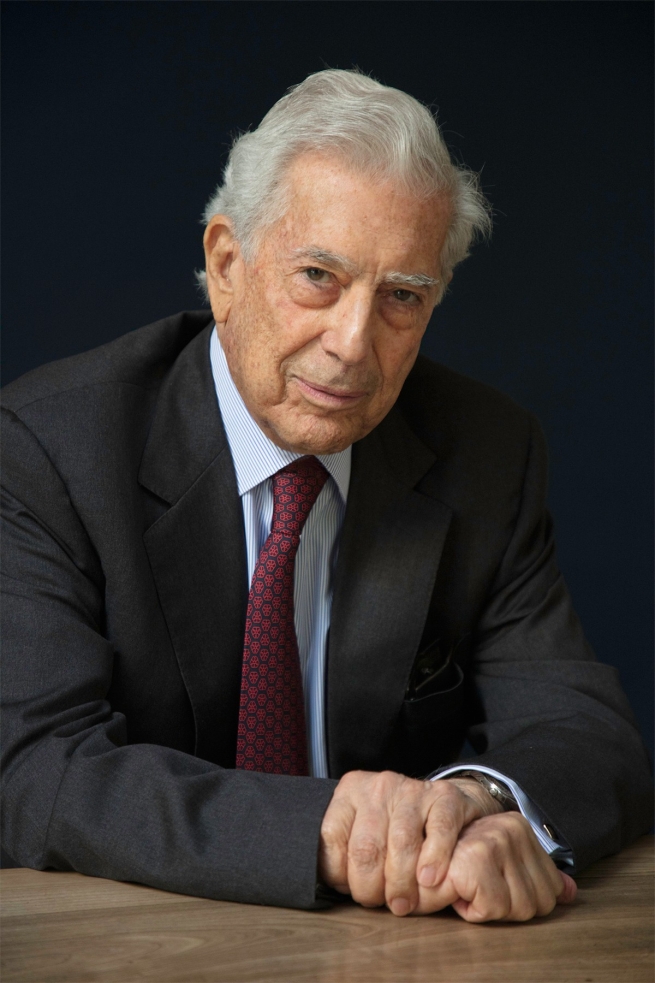A Salesian Student
In the summer of 1946, just before turning ten, Mario Vargas Llosa moved with his mother to Piura, where his maternal grandfather, Pedro Llosa, served as the department’s prefect. At the time, José Luis Bustamante y Rivero—his grandfather’s cousin—was President of Peru (he would later be overthrown in 1948 by General Manuel A. Odría, whose regime inspired Vargas Llosa’s celebrated novel Conversation in the Cathedral).
It was his grandfather Pedro who enrolled Mario in the Salesian School of Piura that year. Given his prominent position, his decision highlights the significance of the Salesians in the region during the mid-20th century.
Vargas Llosa recalled this moment in his memoir A Fish in the Water:
"Grandpa welcomed us at the Talara airport and handed me a postcard with the front of the Salesian School of Piura, where he had already enrolled me in the fifth grade" (Barcelona: Seix Barral, 1993, p. 23).
A colored postcard of the school’s facade—likely similar to the one young Mario received—is preserved in the Salesian Historical Archive of Peru.
However, his initial experience at the school wasn’t entirely pleasant. As he wrote:
"My first encounter with the Salesians and my new classmates wasn’t great. They were all one or two years older than me, but seemed even older—they used bad language and talked about dirty things we at La Salle in Cochabamba didn’t even know existed" (El pez en el agua… A Fish in the Water, p. 24).
He also mentioned being teased for his highland accent and “rabbit teeth.” Despite the rough start, he formed lifelong friendships there, including with Javier Silva Ruete—nicknamed “el gordito”( the chubby one)—who would later become Peru’s Minister of Economy in several administrations from the late 20th to early 21st century.
Though brief, his time at the Salesian school had a lasting impact on his life. He absorbed a kind of rough, masculine vernacular that would later show up in his literary voice. And thanks to a classroom friend—Silva Ruete—he also got his first glimpse of political life. Silva once attended a rally for Víctor Raúl Haya de la Torre, the leader of the APRA party, and this early exposure to political passion left a mark. Politics would become a major theme in both Vargas Llosa’s work and his public life.
In 1946, the year Vargas Llosa studied there, the school’s director was Fr. José Sáfarik, with Fr. Francisco Dañek as catechist, and Fr. Mario Genero as primary school counselor (Elenco Generale 1946, vol. II, p. 124).
Admiration for Don Bosco’s Work
Nearly 70 years later, in March 2013, by then a Nobel-winning author, Vargas Llosa traveled to Chacas in the Ancash region—over 3,300 meters above sea level—to celebrate his 77th birthday. He had heard of the Salesian priest Fr. Ugo De Censi (1924–2018) and was eager to see the work being done there firsthand.
He described the experience in his article “Chacas and the Sky”, published in Spain’s El País in early April 2013.
Describing Fr. Ugo’s legacy in the remote White Mountains, he wrote:
"This slightly anarchist and dreamer of a priest is, at the same time, a man of action—a true mover and shaker—who, without asking the State for a single penny, and putting his bold ideas into action, has led a real economic and social revolution in Chacas and the surrounding areas."
The article was reprinted in full by ANS and widely shared by the Salesians of Peru and media outlets across the globe.
— David Franco Córdova
Historian of the Salesian Congregation of Peru
Source: Boletín Salesiano del Perú
https://www.infoans.org/en/sections/news/item/24049-peru-mario-vargas-llosa-a-literary-giant-who-walked-the-halls-of-a-salesian-school#sigProId73bfb1da3f



